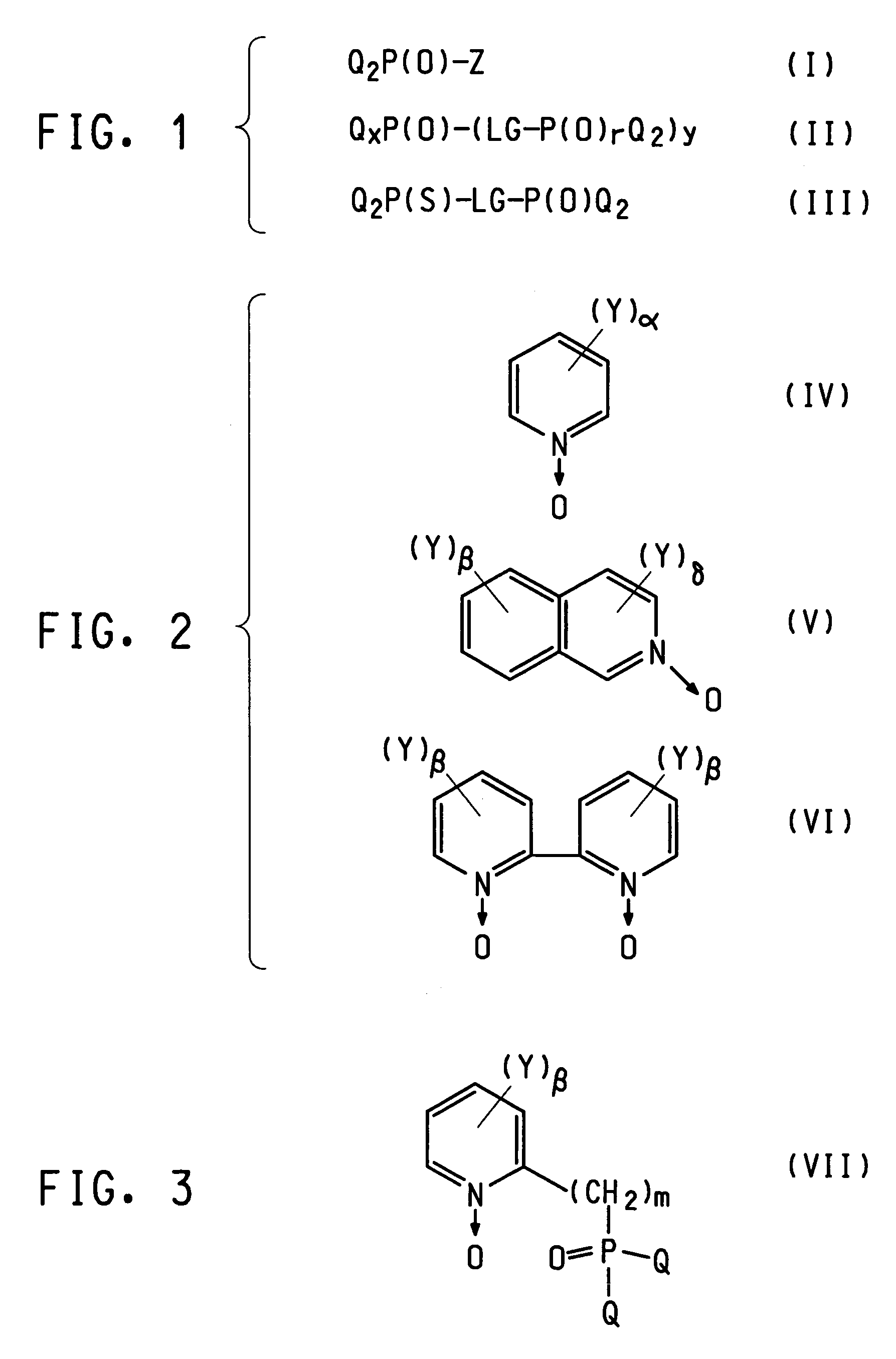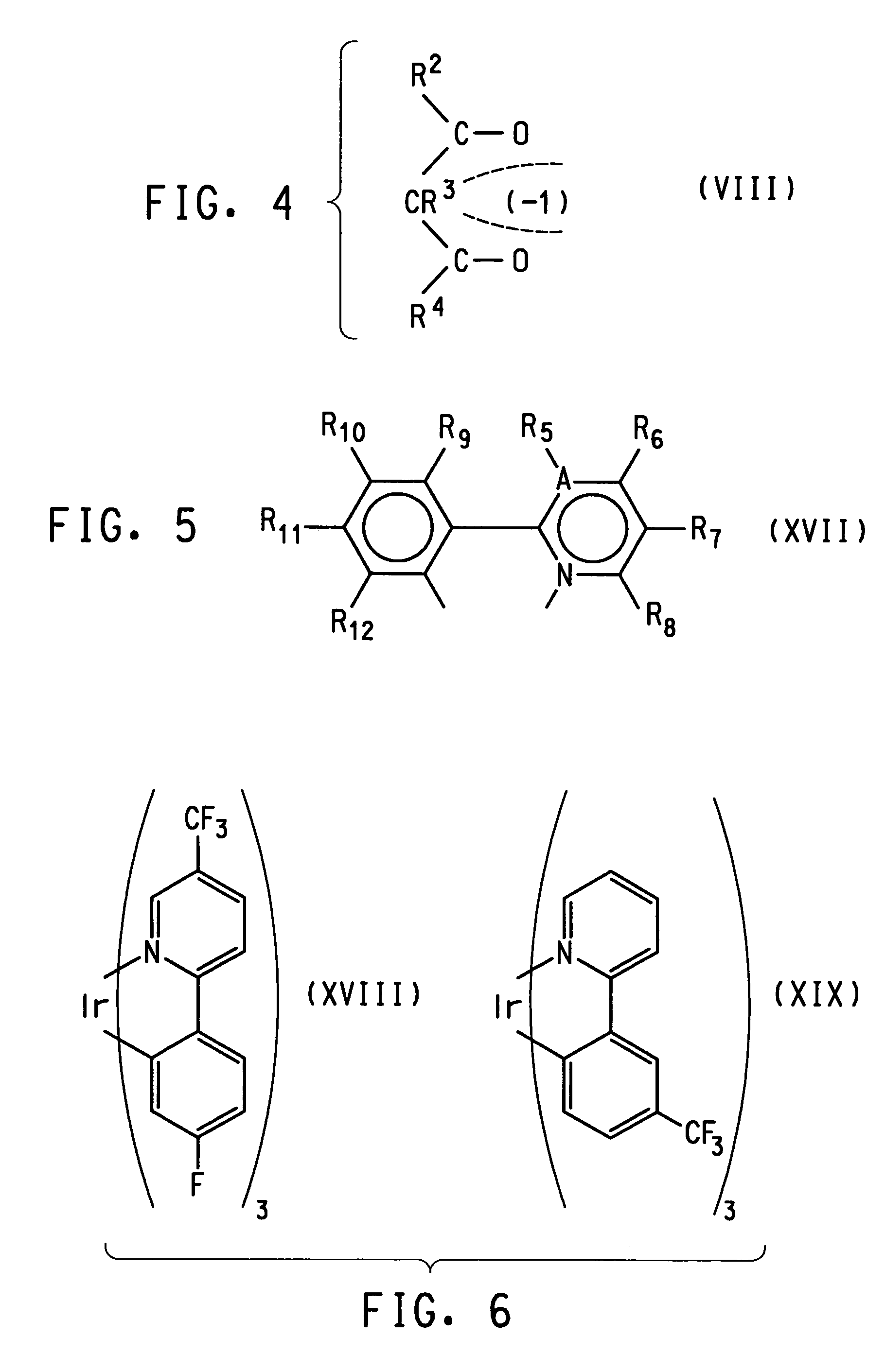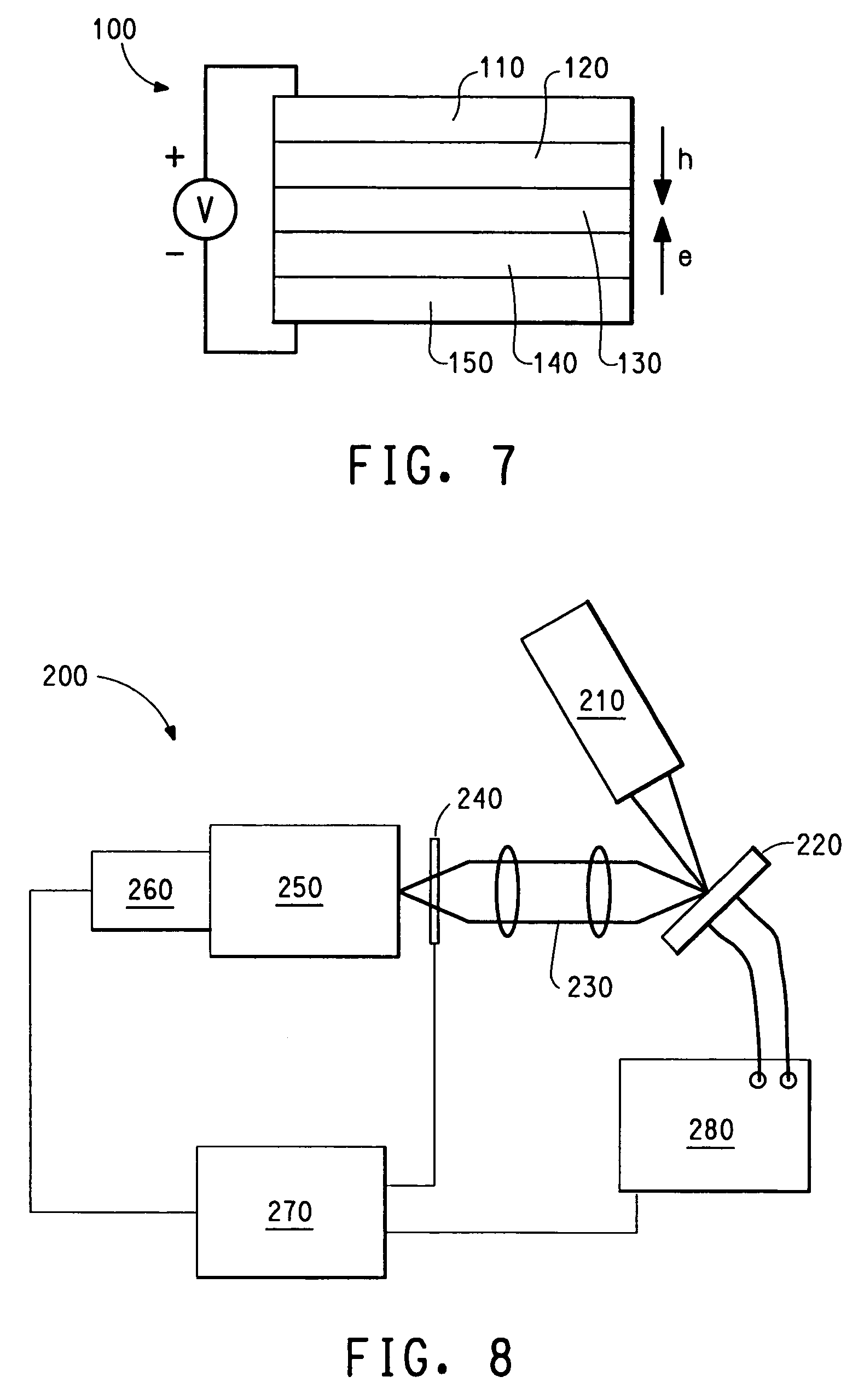Photoactive lanthanide complexes with phosphine oxides, phosphine oxide-sulfides, pyridine N-oxides, and phosphine oxide-pyridine N-oxides, and devices made with such complexes
- Summary
- Abstract
- Description
- Claims
- Application Information
AI Technical Summary
Benefits of technology
Problems solved by technology
Method used
Image
Examples
example 1
[0136]Synthesis of PMBP: 7.5 g 1-phenyl-3-methyl-pyrazolinone was dissolved by warming in 45 mL p-dioxane. While stirring rapidly, 6 g calcium hydroxide was added to the refluxing solution and then immediately thereafter 4.4 mL i-butyrylchloride was also added. After an initial white precipitate formed, the solution was stirred and refluxed for 30 mins during which time the initial solid dissolved and a second white precipitate formed. The solution was cooled and then poured into 100 mL 2M HCl whereupon it becomes dark red and red crystals form on standing for 48 hrs at room temperature. A mixture of red and white needle-like crystals was collected by filtration and washed well with distilled water. Recrystallization from 50:50 methanol:water (wherein the water is pH=4 with HCl) yields 73% fluffy white crystals of the desired product were collected washed with water and vacuum dried.
[0137]Tb(EMBP)3: 1.7 g terbium nitrate tris-dimethylsulfoxide was dissolved into 20 mL methanol and 2...
example 2
[0139]This example is illustrative of a typical synthesis of Ln (β-dienolate)3 (bisphosphine dioxide), where β-dienolate is acac, DI, FOD, TMH.
[0140]Eu(FOD)3(dpppO2). To a dichloromethane (5 mL) solution of Eu(FOD)3 (0.875 g, 0.844 mmol) was added a dpppO2 (0.375 g, 0.844 mmol) dissolved in dichloromethane (10 mL). The resulting mixture was stirred for 48 h. The solvent was allowed to evaporate and the resulting white powder was washed with hexanes, then dried under vacuum. The powder was isolated in 62% yield (0.771 g). 31P{1H} NMR (CD2Cl2, 202 MHz) δ is −48.9.
example 3
[0141]OPNP. To a solution of NaOH (10 g) in water (30 mL) was added bis(triphenylphosphine)iminium chloride (3.00 g), and the mixture was stirred under reflux for 2 hours. After addition of water (50 mL) the thick organic oil was separated from the aqueous phase and washed with water. The oily solid was dissolved in dichloromethane (50 mL), the resulting solution was filtered through silica gel, reduced in volume to ca. 10 mL, treated with hexanes (200 mL), and left overnight. The precipitate was dissolved in dichloromethane (5 mL), and then treated first with ether (10 mL) and after 30 min with hexanes (100 mL). After 1.5 hours white crystals of OPNP were separated, washed with hexanes, and dried under vacuum. The yield of spectroscopically pure OPNP was 1.40 g (56%). 31P NMR (CH3OH), δ 17.8 (d, 1P, J=3.7 Hz), 15.1 (d., 1P, J=3.7 Hz).
[0142]Eu(FOD)3(OPNP)2. To a dichloromethane (5 mL) solution of Eu(FOD)3 (0.627 g, 0.651 mmol) was added a OPNP (0.599 g, 1.255 mmol) dissolved in dich...
PUM
| Property | Measurement | Unit |
|---|---|---|
| Percent by volume | aaaaa | aaaaa |
| Volume | aaaaa | aaaaa |
| Transport properties | aaaaa | aaaaa |
Abstract
Description
Claims
Application Information
 Login to View More
Login to View More - R&D Engineer
- R&D Manager
- IP Professional
- Industry Leading Data Capabilities
- Powerful AI technology
- Patent DNA Extraction
Browse by: Latest US Patents, China's latest patents, Technical Efficacy Thesaurus, Application Domain, Technology Topic, Popular Technical Reports.
© 2024 PatSnap. All rights reserved.Legal|Privacy policy|Modern Slavery Act Transparency Statement|Sitemap|About US| Contact US: help@patsnap.com










